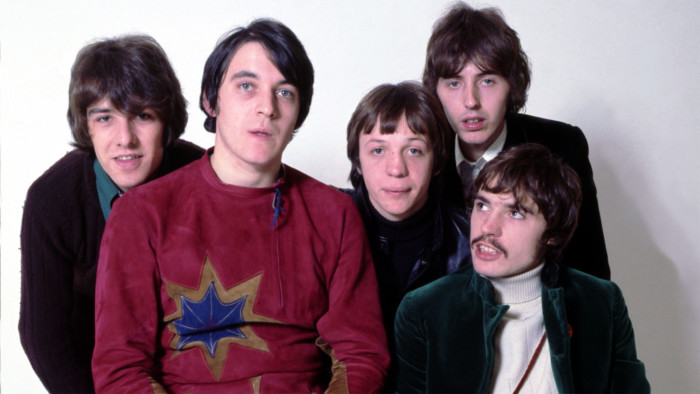The Life of a Song: ‘A Whiter Shade of Pale’

Simply sign up to the Life & Arts myFT Digest -- delivered directly to your inbox.
How long is the life of a song? In such an ephemeral art form as popular music, a year can seem a long time. We are just getting our heads around the idea that songs that were meant to last in the public consciousness for a few weeks are actually tumbling from one zeitgeist to another over the course of several decades.
But sometimes there is a longer narrative at play: a piece of music written centuries ago can suddenly re-emerge in a quite different guise. But can we even recognise it?
Procol Harum’s “A Whiter Shade of Pale”, released in May 1967, was a song that was both of and against its time. Its druggy tempo and artful lyrics chimed perfectly with the air of cultural experimentation of the 1960s. Its apparently nonsensical opening line — “We skipped the light fandango” — has inspired laboured analysis, sourced, by some, in the writings of Milton and Shakespeare.
But the melancholy tenor of the song’s melody was, as the parlance of the time would have it, a downer. “A Whiter Shade of Pale”, attributed at the time to Gary Brooker and Keith Reid, tried to scupper the summer of love before it even got properly started.
The lyric, said Reid many years later, told the story of a seduction. But its eroticism was imbued with sadness. Reid had been watching those desperate masterpieces of European art house cinema, Pierrot le Fou and Last Year at Marienbad. The song’s three short verses were similarly joyless and alienating: “I was feeling kinda seasick/ But the crowd called out for more”. As for the melody, it seemed to belong to a different time altogether.

Which it did. The more sophisticated commentators of the time could not help but point out similarities between the song and the sublime baroque music of Bach. Brooker did not deny it. He had listened to “Air on a G String”, he said, and it set off a “spark” within him, contributing to the lugubrious chord progression of his hit song.
“A Whiter Shade of Pale” reached the top of the charts all over the world. It was an undeniably classy piece of work, and by the time the summer of love had ended, its downbeat flavour was recognised as prescient. It settled into the national treasure category of favourite hit singles, became covered in more than 700 versions (none memorable), and was heard in just about every meaningful movie about the 1960s.
But nearly 40 years after its release, the issue of that musical dialogue between Bach and Brooker was raised again. This time it was the group’s organist Matthew Fisher who brought it up. Fisher went to court to claim a share in the song’s royalties. It was he who was at least partly responsible for the song’s melody, he argued.
Intriguingly, Fisher too admitted a debt to Bach. Yes, the song did sound like a piece of his music. But it was not “Air on a G String”. Fisher claimed he based the melody on Bach’s “Sleepers, Awake” cantata, which he mashed up with The Teddy Bears’ hit “To Know Him is to Love Him”. Brooker, by contrast, claimed he had been inspired by another cross-fertilisation: the bars of the composer’s music used in the famous Hamlet cigar advertisement.
In 2009, the House of Lords ruled in Fisher’s favour, and decreed that he should share in future royalties from the song. It concluded a case which had been a fascinating exercise in how something so malleable as a melody can survive in the collective subconscious for hundreds of years. Has any number one single claimed such a rich and complicated heritage? Is there a longer life of a pop song than this?
For more in the series, plus a podcast with clips from the songs, visit ft.com/life-of-a-song
Photograph: Getty Images
Comments